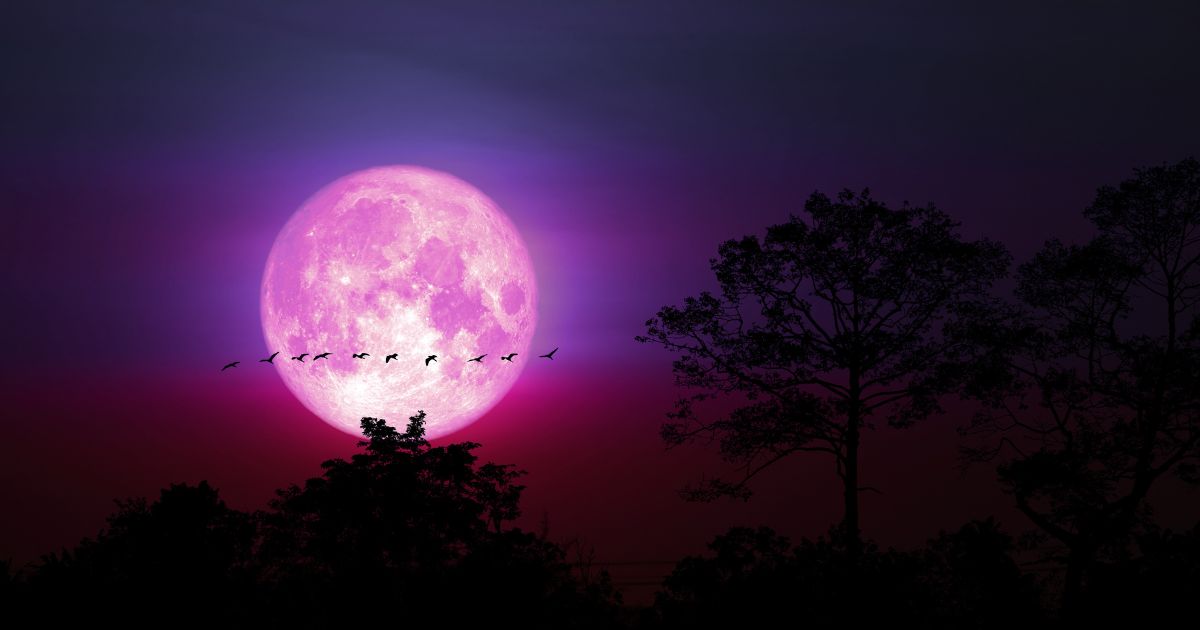Here are some fun facts about each provinces/territory ambassador bird.
Newfoundland and Labrador – Atlantic Puffin
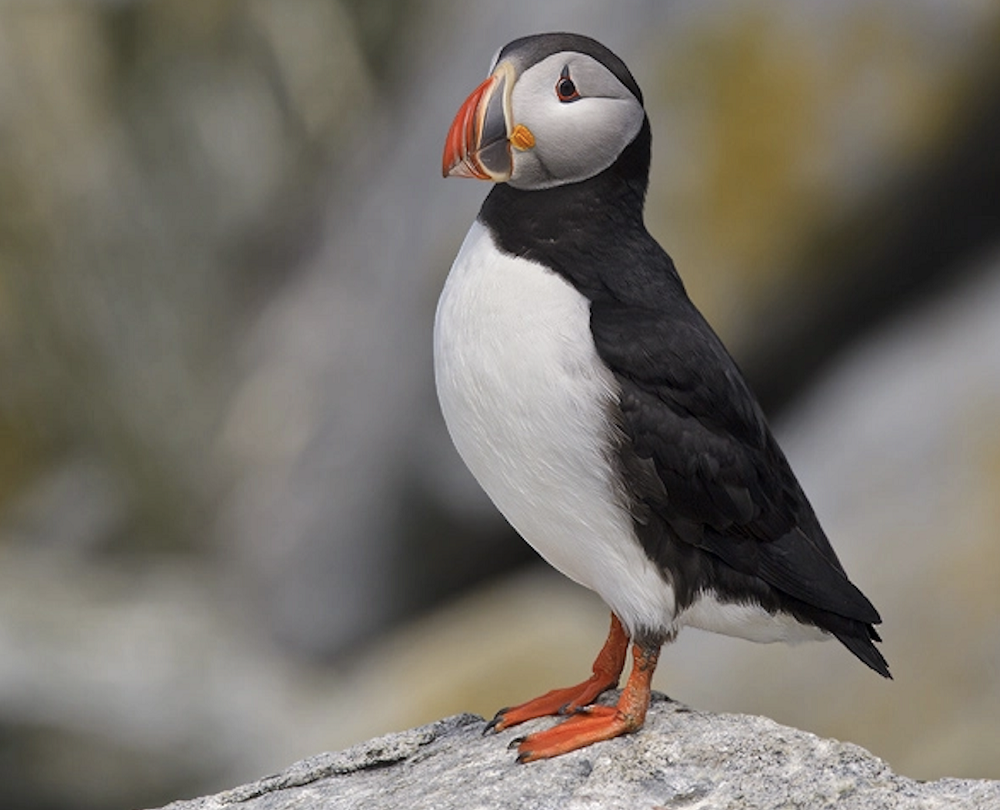
- The Atlantic puffin, also known as ‘parrot of the sea’ or ‘clown of the sea,’ has a large, colourful triangular bill that turns orange and red during the breeding season.
- They are divers and live on a diet of fish.
- They live and breed on The Rock’s rocky shores, predominantly on the east coast during the spring and summer months.
- (They are also known to live at sea in the winter months.)
- Typically, puffins lay one egg per nest.
- The largest colony in Newfoundland is south of St. John’s in the Witless Bay Ecological Reserve, where there are about 260,000 pairs.
- While in Iceland a few years ago, I learned that the local folks welcomed the return of puffins in the spring because they ate them. It’s illegal to hunt or eat puffins in Newfoundland and Labrador
- In 1941, Puffin Books was launched as the children’s imprint of the British publishers, Penguin Books. Penguins and puffins do look somewhat alike.
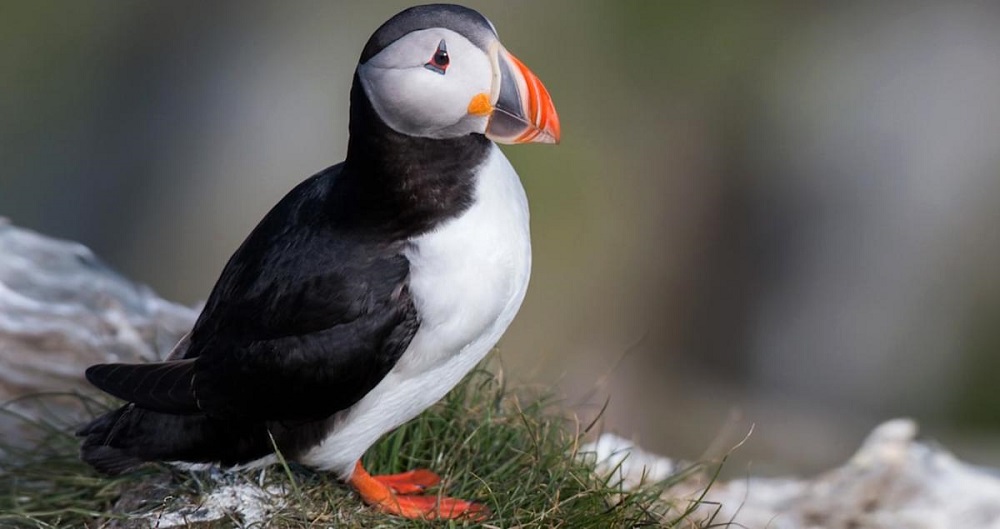
Nova Scotia – Osprey

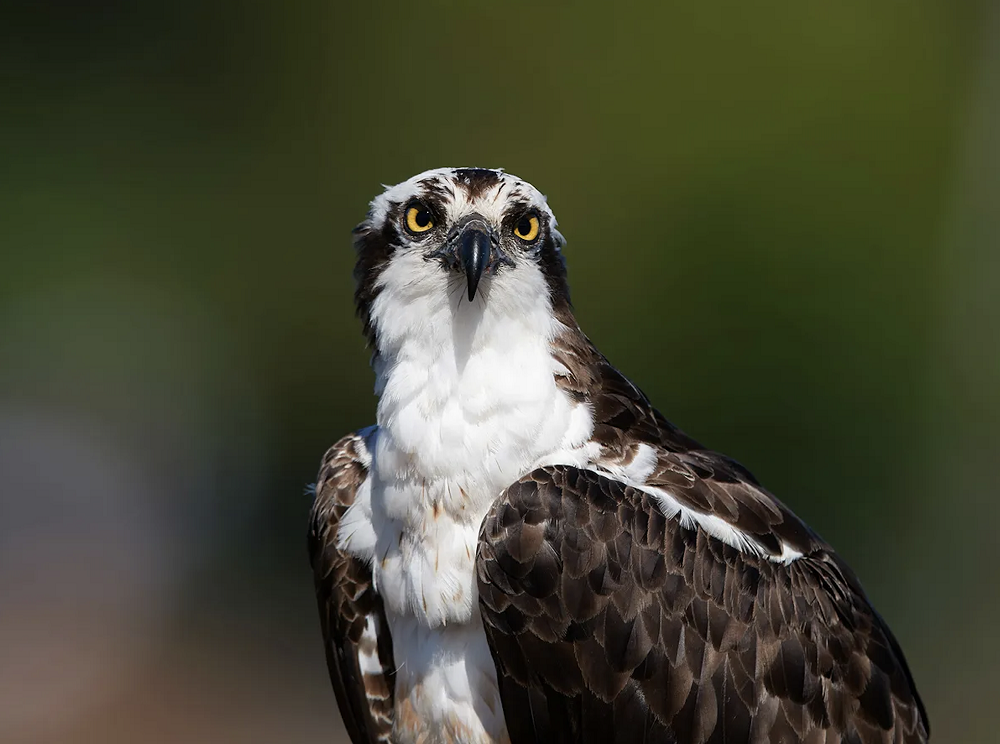
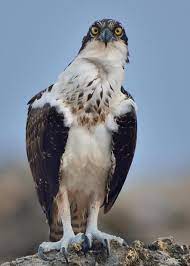
- The osprey was named Nova Scotia’s official bird in 1994.
- A fish-eater living by the water, the osprey or ‘fish hawk,’ has the word “prey” right in its name.
There are ospreys on every continent but Antarctica. - If you get close to an osprey nest, you will hear a highpitched, whistle-like call signalling their territorial dominance.
- Ospreys have large wingspans. They are bigger than hawks and slightly smaller than eagles.
- Ospreys migrate south to the Caribbean and Central and South America and usually return to the same nest in the spring.
- Osprey eggs have been threatened by the insecticide DDT in the past but seem to be on the rebound.
- Human-made nests on platforms are a popular home for ospreys.
- Years ago, on a canoe trip, I witnessed a fascinating sight: an adult osprey teaching a young one to dive for fish at 6:00 a.m. just off our campsite.
New Brunswick – Black-Capped Chickadee
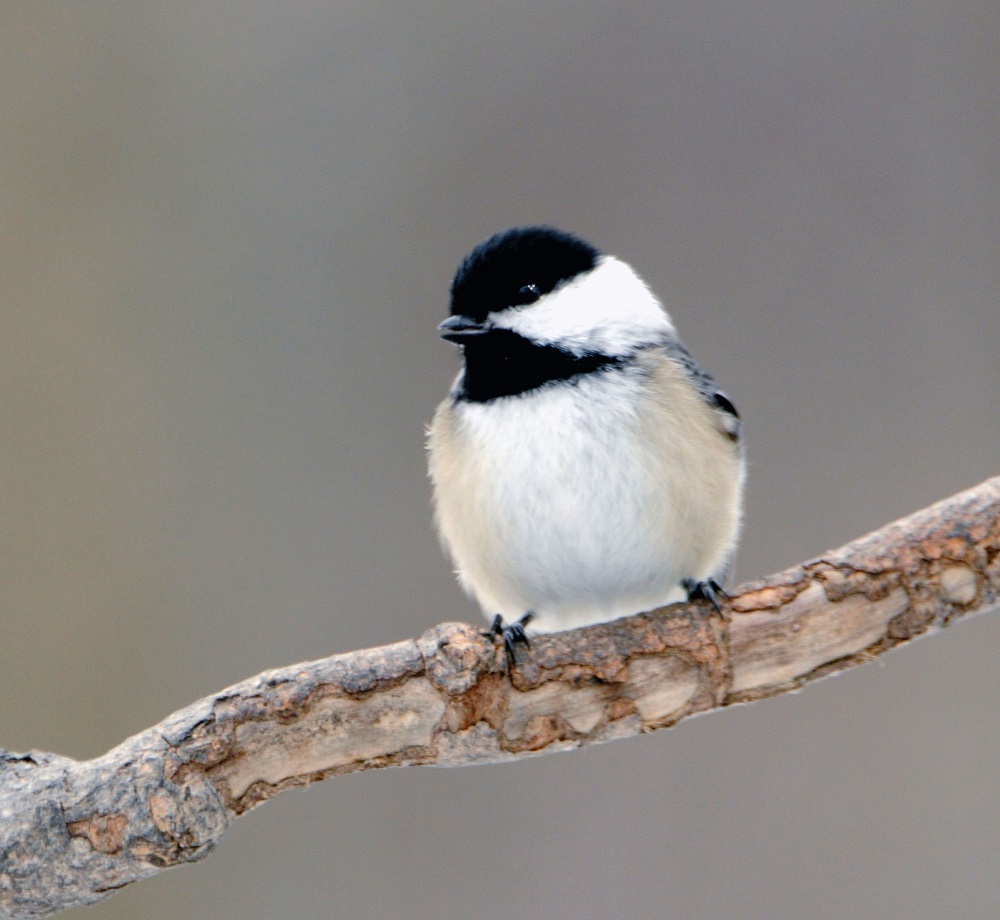
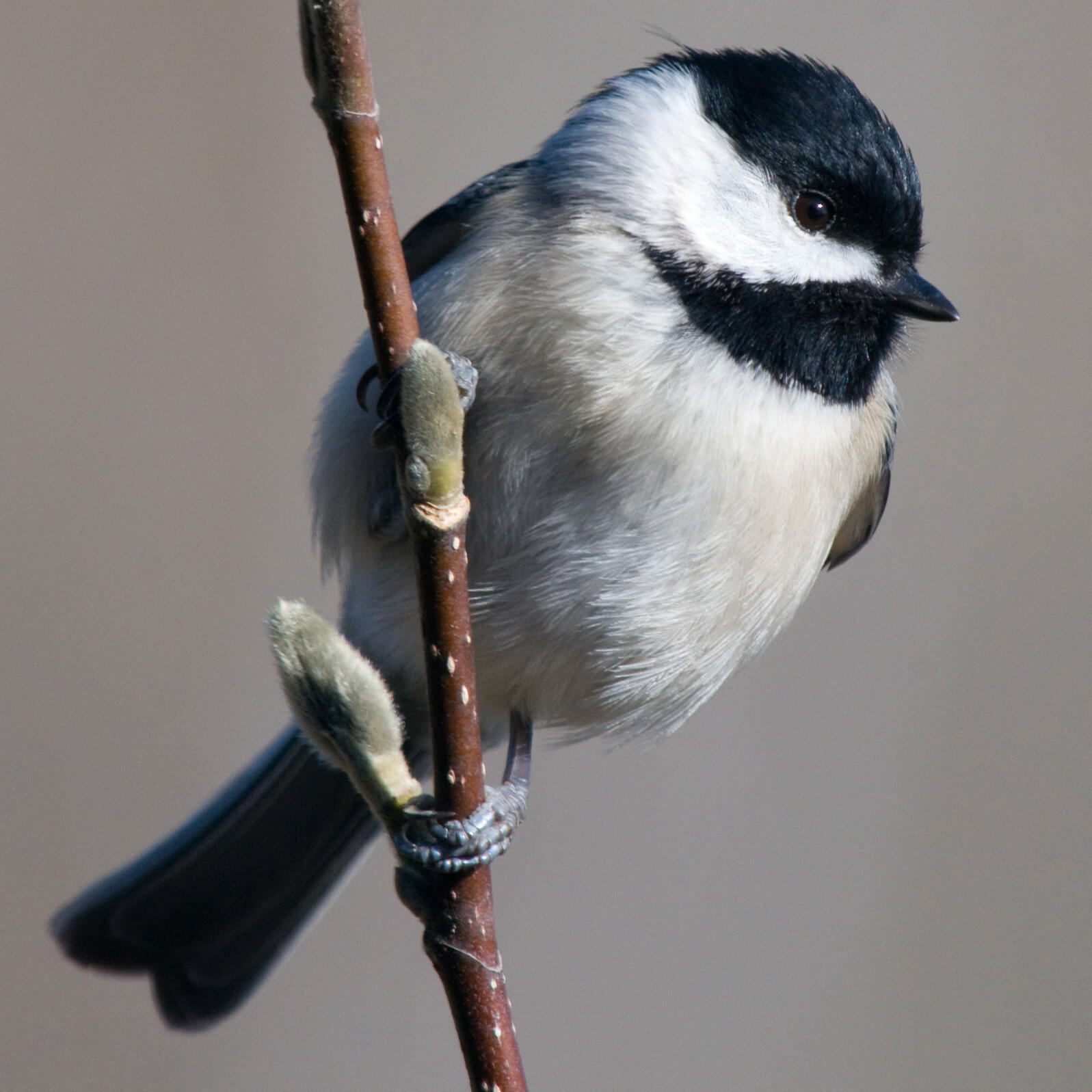
- A member of the Tit family of birds (i.e. titmouse), the chickadee became this province’s bird in 1983, as proposed by the New Brunswick Federation of Naturalists.
- The chickadee can be easily recognized by its black cap and bib, white cheeks, gray back, wings, and tail, and whitish underside
- It can tolerate cold temperatures by lowering its body temperature to conserve energy.
- Chickadees are easily attracted to feeders — perhaps you have ever experienced the joy of feeding seeds to a chickadee from your hand.
- They also cache food (mostly in fall and winter) and are skilled at retrieving it — often in and under the bark of trees.
- Chickadees have an excellent memory and know which sites have been emptied by themselves or by others.
- The chickadee’s hearty chickadee-dee-dee call is often used to warn of predators.
- The City of Calgary and the State of Massachusetts have also adopted the chickadee as their official mascot.
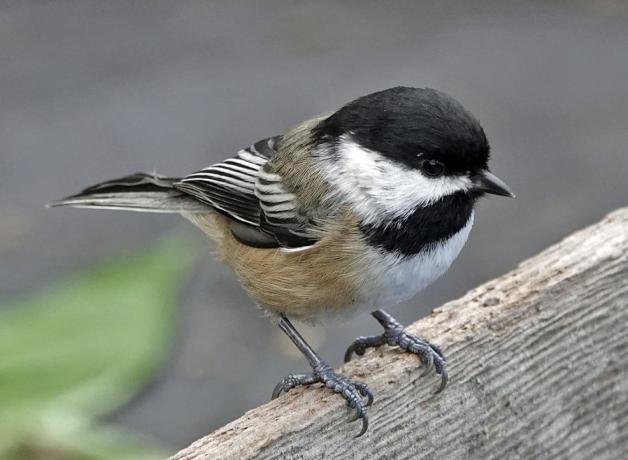
Prince Edward Island – Blue Jay
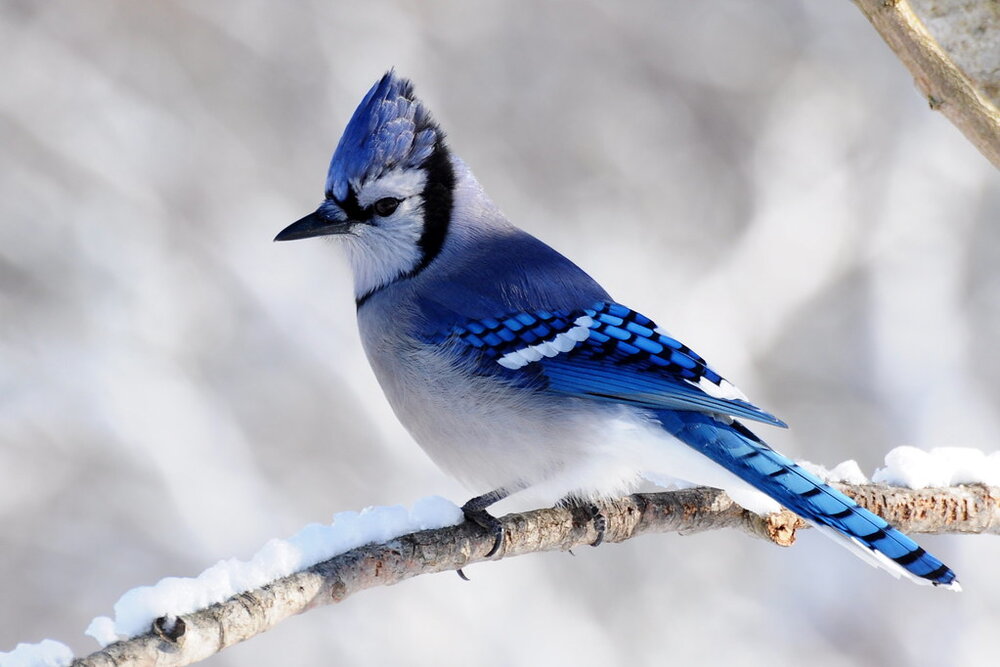
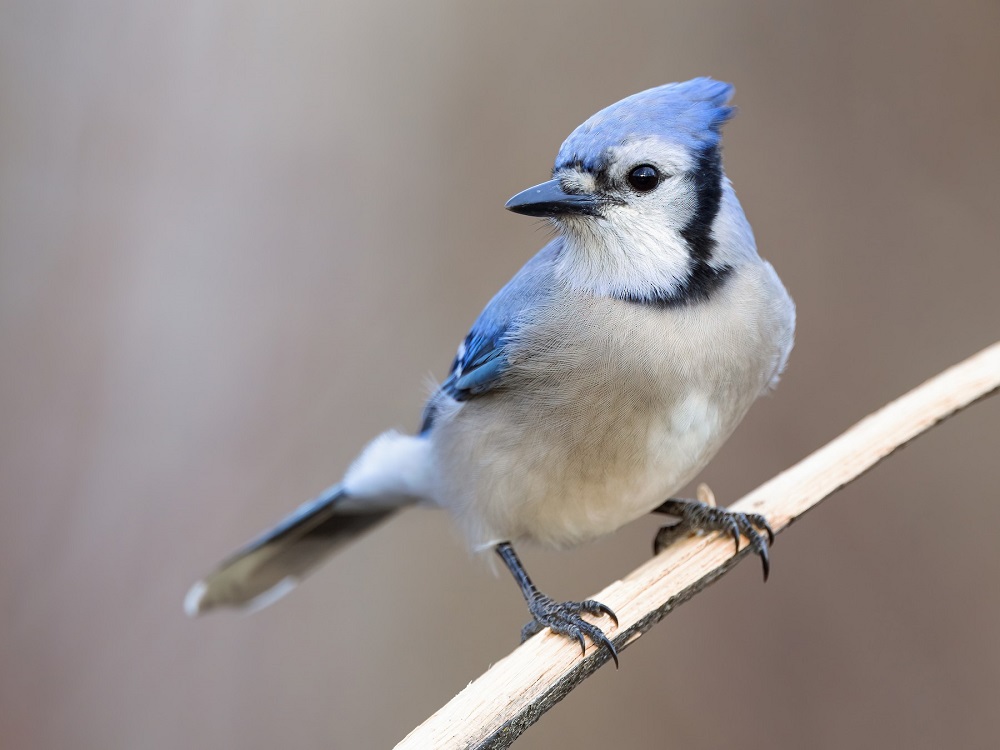
- In 1976, Prince Edward Island held a province-wide vote for their bird, and in 1977, the blue jay was officially selected. At about the same time, the Toronto Blue Jays baseball team was launched (finished in the basement for the first 5 years).
- The blue jay can also be called a ‘jaybird.’
- Blue jays can be a nuisance to other birds, robbing nests and chasing other birds away from food. They have even been known to decapitate other birds!
- A close relative of the crow, this bird is both curious and intelligent. On the aforementioned aggressive side, they often travel in roving gangs. We see this behaviour at our bird feeder.
- Blue jays can imitate the call of raptors — a handy defence mechanism. One distinctive blue jay call that I have heard is referred to as the ‘rusty pump,’ sounding much like an old hand-operated water pump.
- Blue jays have a fondness for acorns and supposedly helped spread oak trees after the last ice age.
- They love peanuts in the shell. One jay will often cart away 4-5 at once.
- They prefer to nest in evergreens.
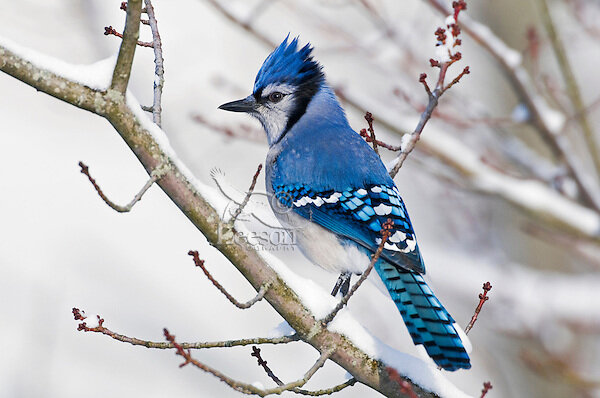
Quebec – Snowy Owl
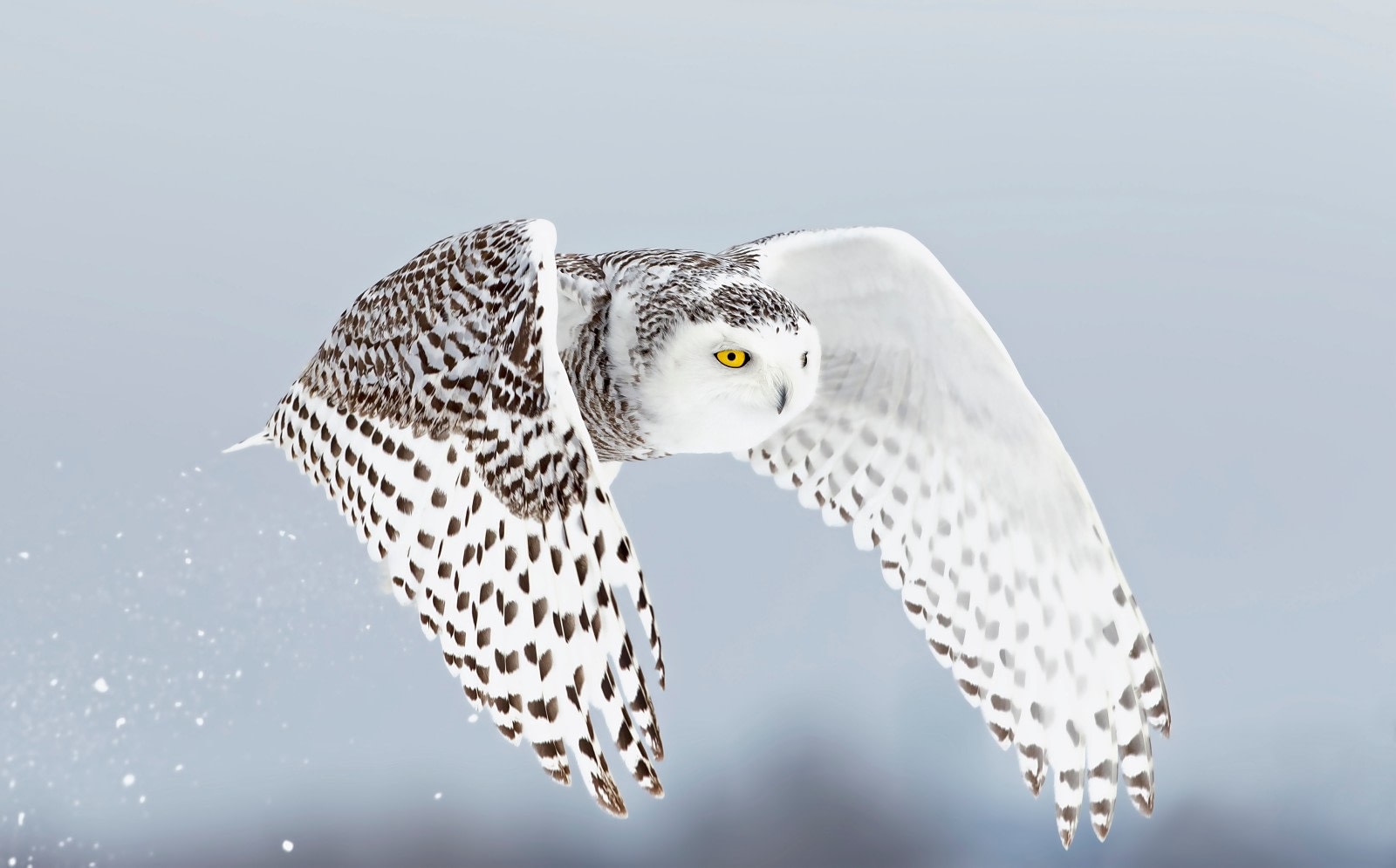
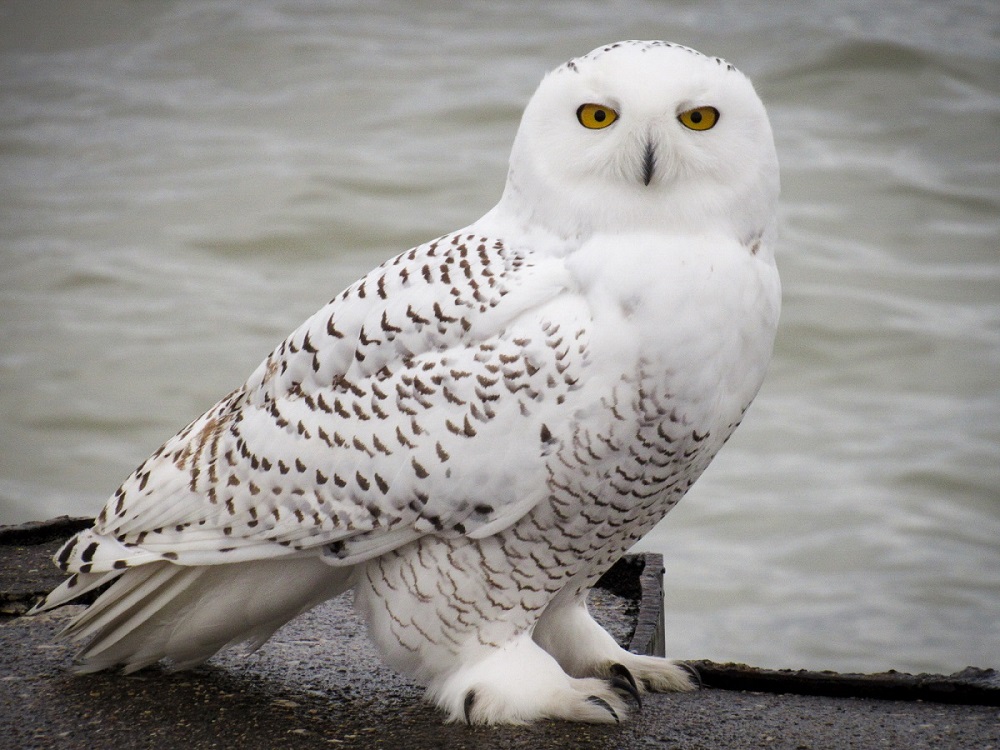
- The bright, white snowy owl is also known as the ‘polar owl,’ ‘white owl,’ or ‘Arctic owl.’
- Male snowy owls are almost completely white, while females are white with short dark stripes on white feathers.
- One distinguishing feature is the fluffy white feathers around their feet for comfort in the winter
months. Think slippers for birds. - Their wingspan is 4-5 feet on average.
- Unlike many owl species, snowy owls are not particularly nocturnal and often hunt in daylight.
- Snowy owl pairs usually mate for life.
- Female snowy owls can lay from 3 to 11 eggs at a time. The more food they get, the more eggs they lay.
- Quebec chose this bird in 1987 to encourage wildlife protection.
- The snowy owl, like other birds, finds airports an attractive place to live. As a result, they are often
involved in ‘bird strikes’ with planes. - Snowy owls can live up to 30 years old in captivity, but their life in the wild is about a third of this.
- One of the biggest threats that climate change poses for snowy owls is the scarcity of their main
food source, lemmings. Global warming is depriving the lemmings of their snowy habitat in the Arctic
and other very cold regions.
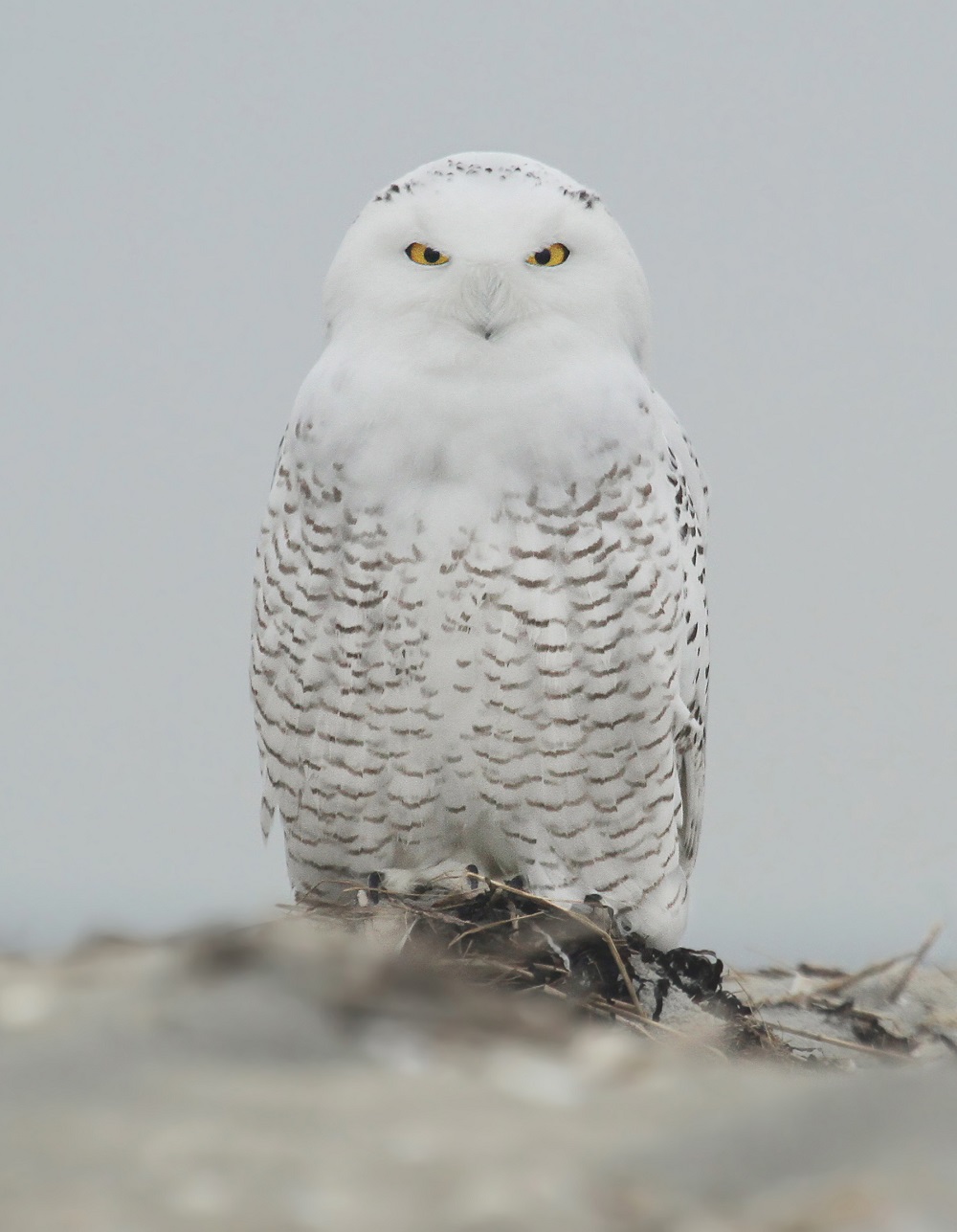
Ontario – Common Loon

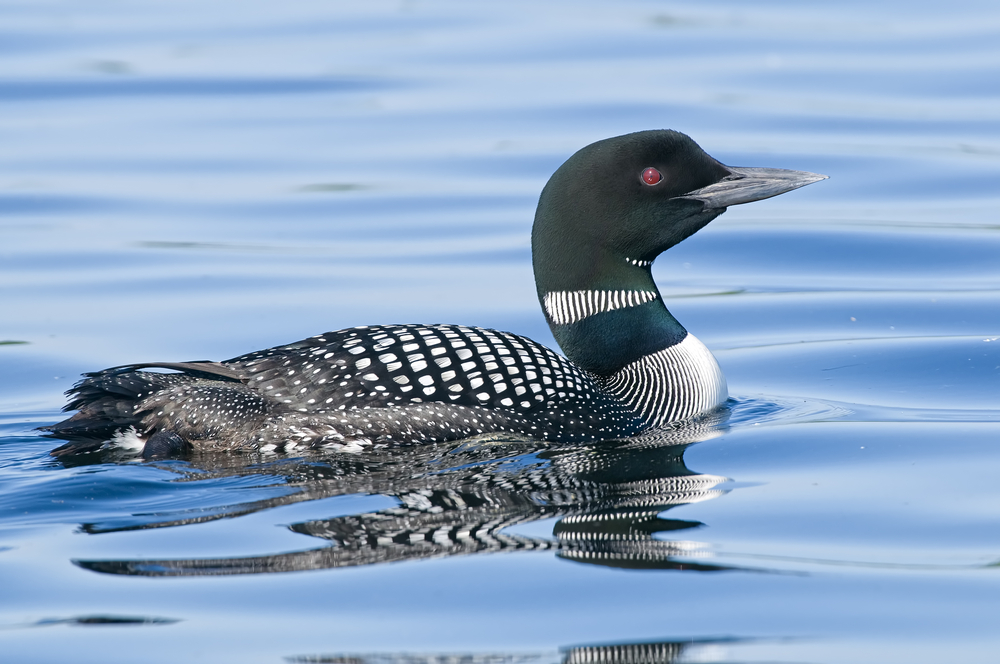
- The loon is a symbol of wilderness, solitude and the north.
- Pairs of loons normally take up residence on lakes throughout Ontario.
- The loon is also known as the “great northern diver.” I once witnessed a loon as it dove under my canoe and swam underwater. A fantastic sight.
- Their yodelling, wailing and laughing calls are part of the cottage & camping experience in Canada’s largest province.
- One October, at the end of Opeongo Lake in Algonquin Park we witnessed an unusual sight: a large flock of loons. They were gathering to fly together after raising their young. This gathering is known as ‘rafting’ and is a sight to behold.
- You’ve probably heard the expression ‘crazy as a loon,’ but did you know that a number of loons together is known as an ‘asylum?’
- The loon was designated Ontario’s provincial bird in 1994.
- It was in 1987 when the Canadian paper one-dollar bill was replaced by a coin and the loon was featured on one side, hence the nick-name “loonie.”
- If you are looking for fish, find out where the loons are hanging out.
- They are great divers and fly at speeds up to 120km/hr but with legs set back on their torsos, they can’t walk very well so their nests are built next to the water.
- Loons have had cinematic moments in movies such as “On Golden Pond” and “Finding Dory.”
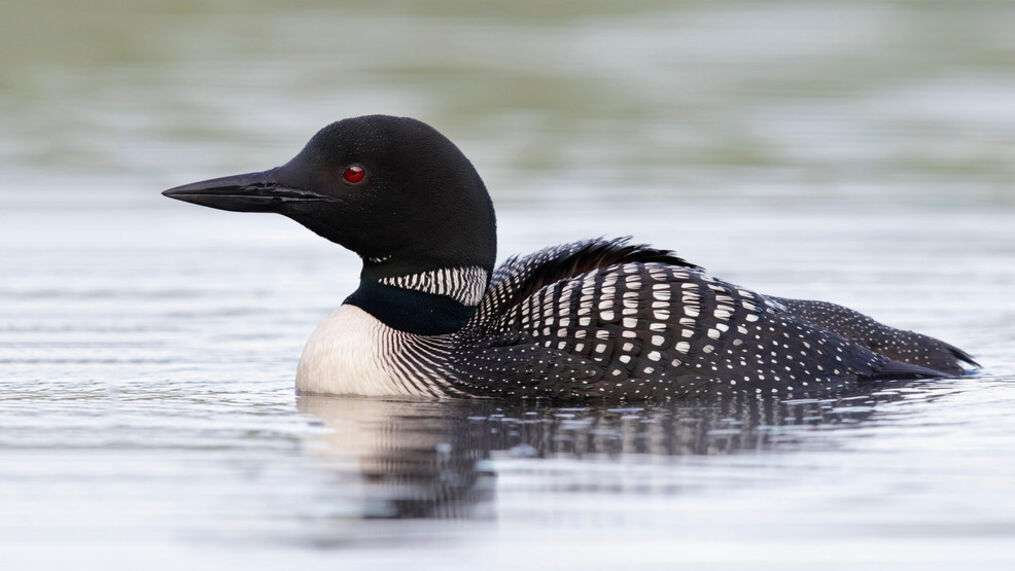
Manitoba – Great Gray Owl
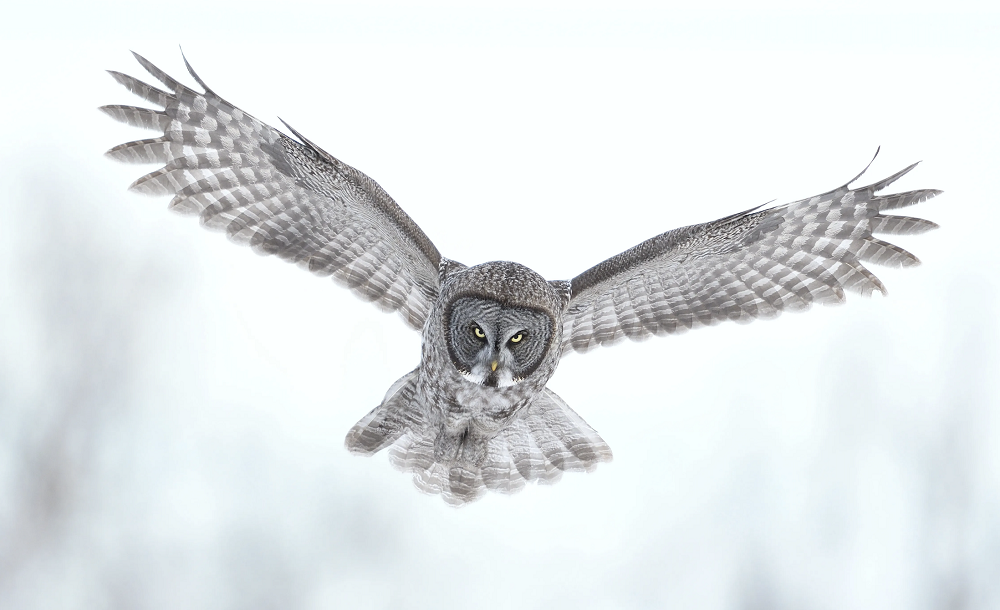
- The great gray owl is believed to be the world’s largest owl and became Manitoba’s official bird in 1987.
- Also known as the “phantom of the north,” this owl has the reputation of being a deadly predator.
- It preys mostly on tiny rodents like voles, mice and squirrels.
- The female is larger than the male, which is common in the bird world.
- Rather than build or reuse nests, this owl takes over used raptor nests or hollows in trees, and the greatest threat to this species is from the harvest of trees.
- The great gray owl is reasonably rare in Manitoba, with somewhere between 1,500 and 3,000 birds in the wild.
- There is a famous local story about a rescued great gray owl in the book Lady Grayl: Owl with a Mission by Robert Nero.
- For kids of all ages, there is a great gray owl poster to colour at naturenorth.com/Gray_Owl/Gray_Owl.html.

Saskatchewan – Sharp-Tailed Grouse
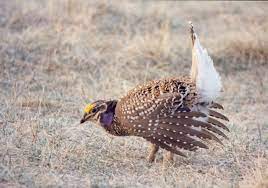
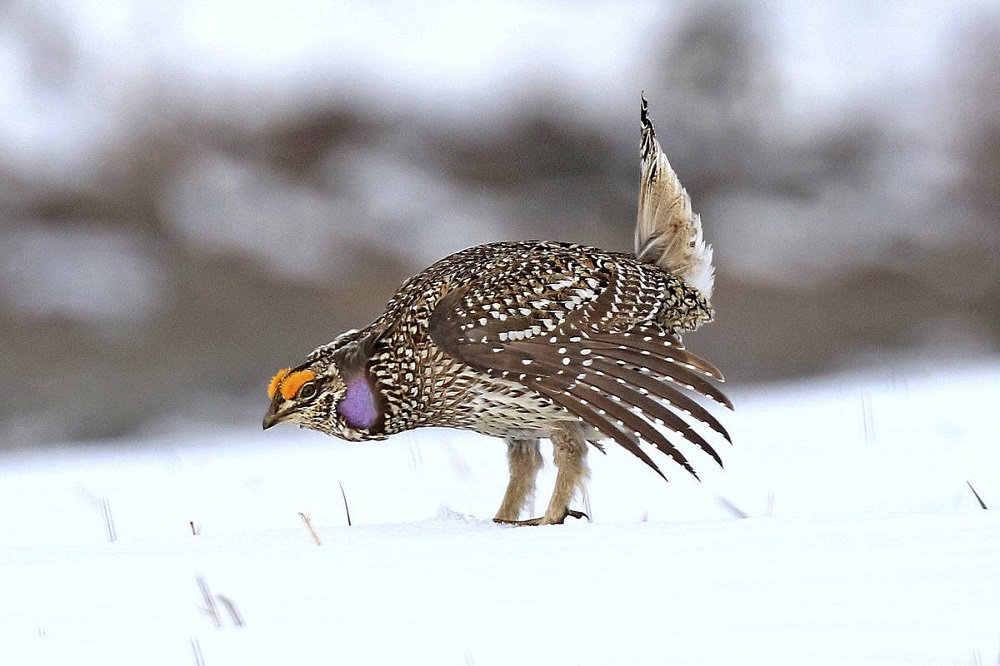
- There are 17 species of grouse across North America, Europe and northern Asia and 6 of them reside in Saskatchewan.
- The sharp-tailed grouse or ‘fire grouse’ is a mottled brown bird resembling its cousin, the prairie chicken.
- Males put on quite a dancing display during mating season. This dance is called ‘lekking.’ Male
birds stamp their feet rapidly on the ground about 20 times per second. Like Mick Jagger, it seems
those that rest the least and dance the fastest are dominant with the females. It’s worth a search
for grouse lekking on YouTube. - Endangered but not threatened, the sharp-tailed grouse are hunted annually, and there is a
loss of habitat due to agricultural practices. Sadly, the population has declined by about 80% since - Saskatchewan took this grouse ‘under its wing’ in 1988. It is often a meal for predators like the great horned owl – our next bird.
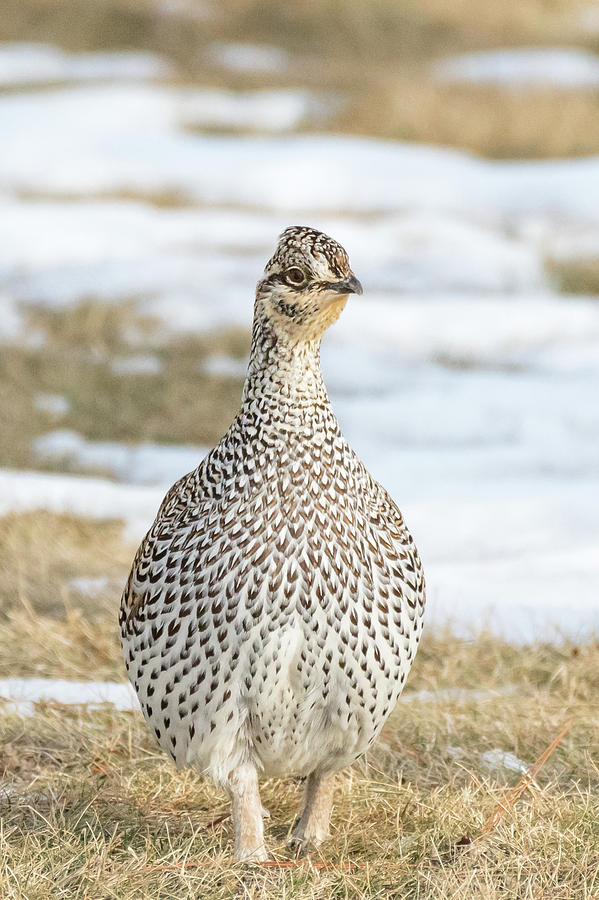
Alberta – Great Horned Owl
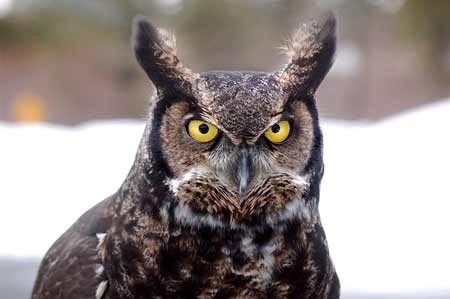
- The great horned owl or “tiger owl” covers a vast range in North America. It is the owl of storybooks with its large staring yellow eyes, hooting voice and ear-like feather tufts.
- One evening last November, around 9:00 p.m., I heard a few of them hooting to each other. Their
call was so loud that I heard it through closed doors and windows. An eerie, primeval sound. This owl
mates in November and December. - A great horned owl can fly more than 60 km/h in level flight.
- In 1977, a province-wide children’s vote made the great horned owl Alberta’s official bird, and it is
protected by Alberta’s Wildlife Act. - Owners of small pets will want to be careful in the evening. Like coyotes, the great horned owl is a
predator, eating rodents, rabbits and sometimes creatures as large as a porcupine or skunk. - They often eat mice so humans should consider not poisoning mice, that will in turn poison the owls (and other creatures).
(Traps are better when it comes to culling excess mice.) - If you find a fledgling owlet on the ground don’t worry. It’s likely learning to fly and a parent is probably nearby.
- Like other owls, the great horned can swivel its head in what seems to be a 360-degree pattern.
- You may not hear them because they are very quiet in flight. Sneak attack.
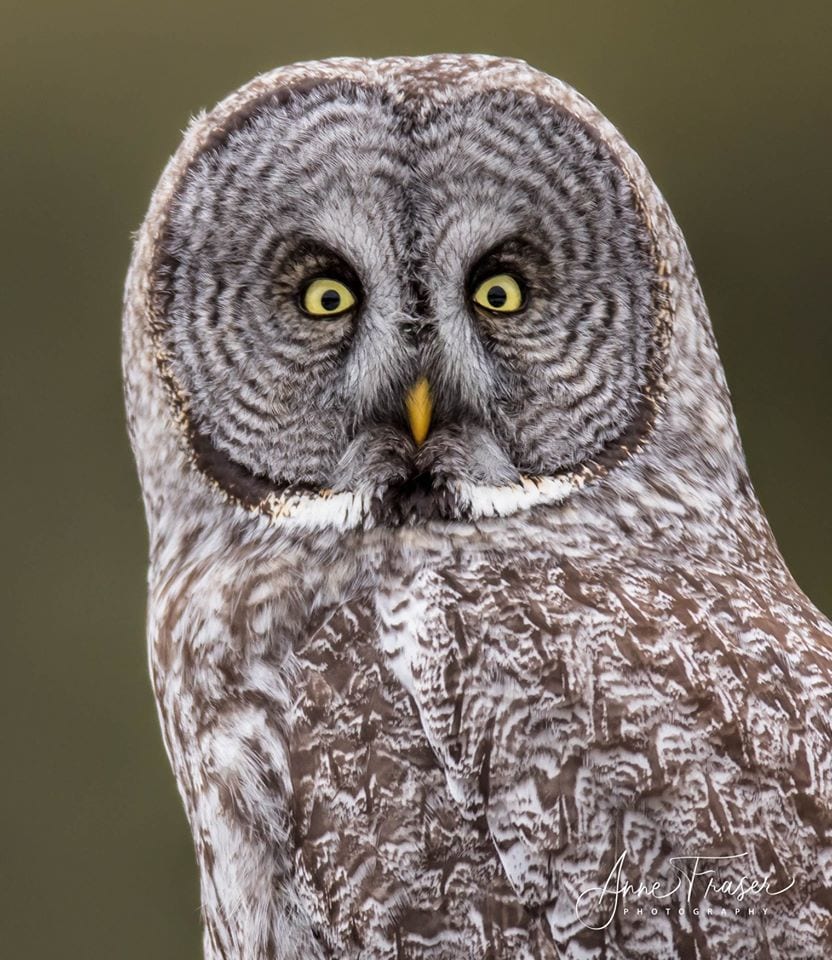
British Columbia – The Steller’s Jay
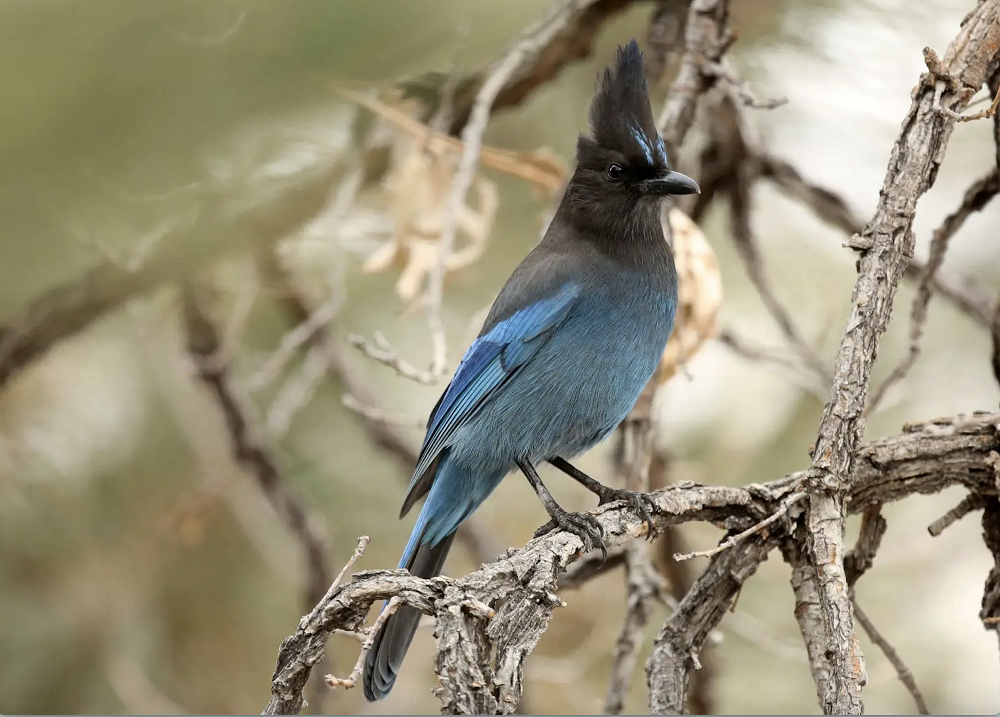
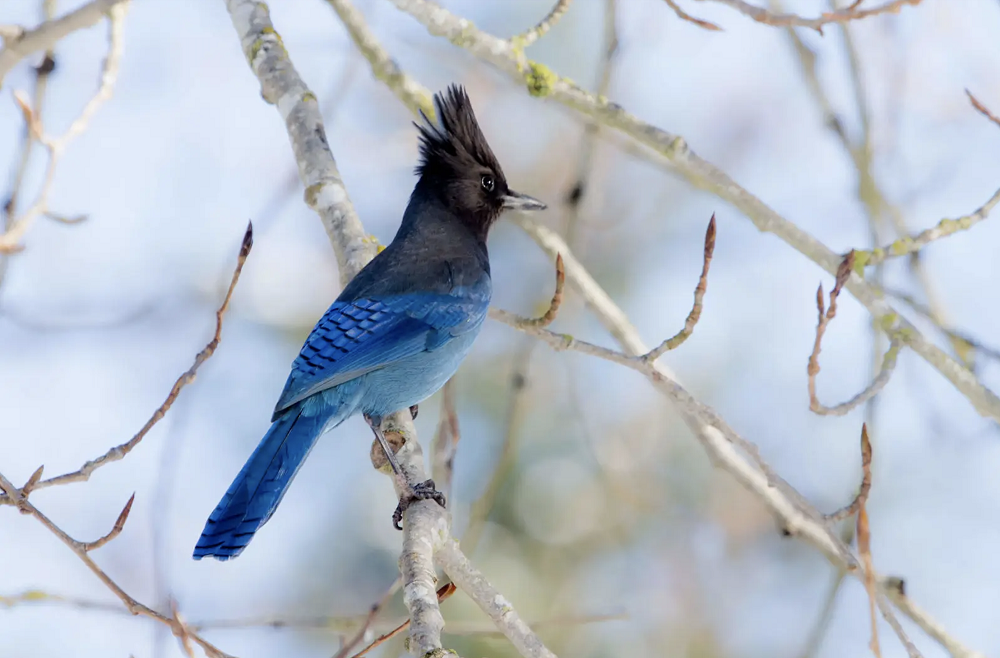
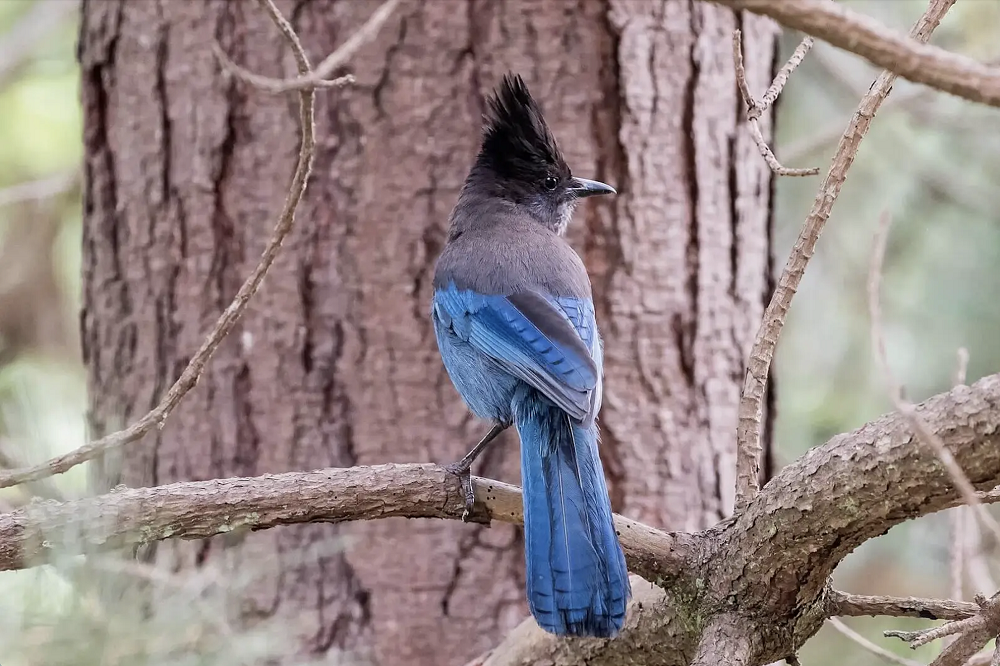
- Steller’s jay is a striking cobalt blue and black with a crest similar to the blue jay. Both species are about the same size.
- The big difference between it and a blue jay is that a Steller’s jay only lives west of the Rockies. In
1987, the people of B.C. selected Steller’s jay as their provincial bird. - The Steller’s jay is named after German botanist and naturalist Georg Steller, the first European
to record them in 1741. - Steller’s jays form monogamous, long-term pair bonds.
- The Steller’s jay uses mud to build its nests. Their eggs are bright blue.
- Jays will cache nuts in the ground but often forget where they hid them.
- I was in the Yukon in 2010 and witnessed some Steller’s jays descend on a station wagon of folks about to have a picnic. These cheeky blue ‘bandits’ have a reputation for being true party crashers.
- Like ravens, images of Steller’s jays can be found carved on totem poles across Canada.
- It is believed that the jay is willing to teach fearlessness and adaptability if you follow its lead.
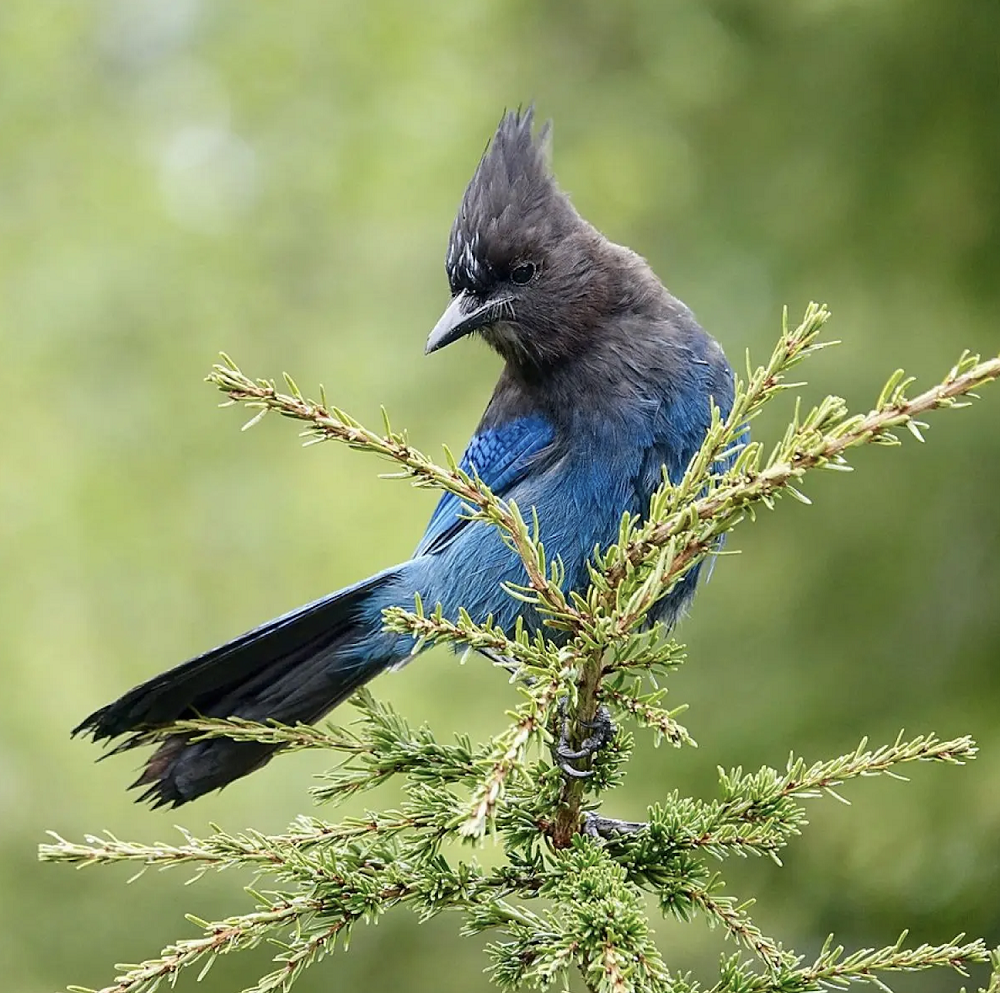
Yukon – Raven
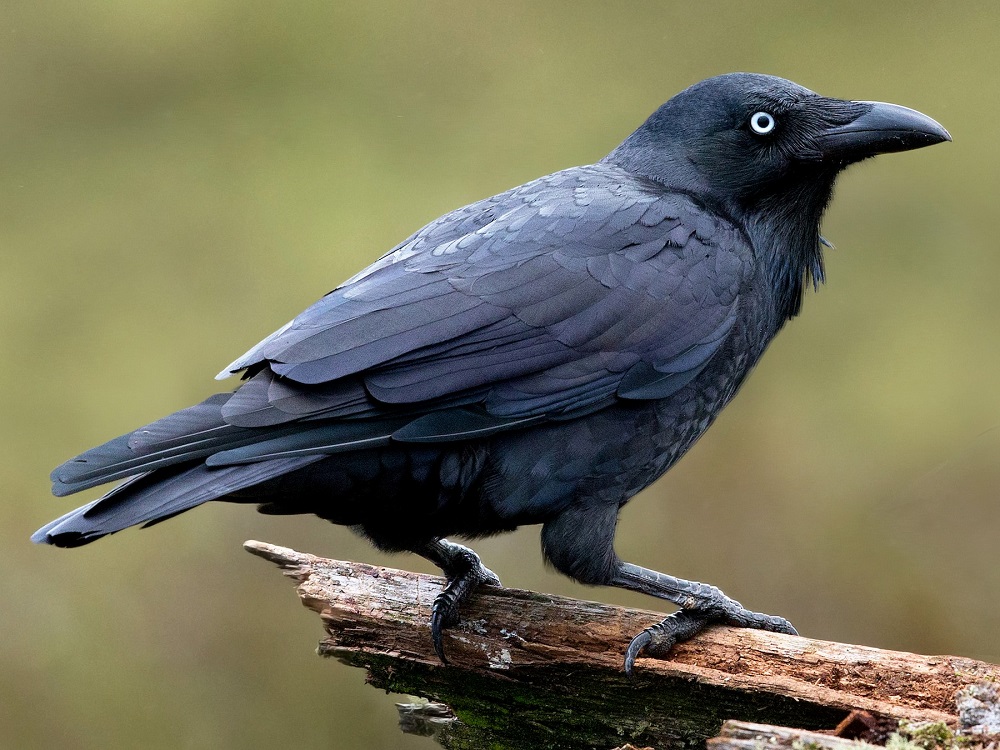
- The raven has been Yukon’s official bird since 1985. It is believed ravens migrated over the Bering land bridge into North America.
- Ravens are often mistaken for crows, but there are several differences: ravens are bigger and more solitary, and the raven’s beak is bigger and more curved than the crow
- Crows like to gather in a group (a murder of crows).
- Ravens tend to glide more in-flight than flap like crows. Crows tend to ‘caw’ while ravens
have a more guttural call. - Ravens are featured in many literary works by authors such as Shakespeare, Tolkien, Poe and, more
recently, Stephen King (Zoltan, a pet raven in The Gunslinger). - According to the Canadian Encyclopedia, “The Indigenous people of the Northwest Coast had numerous origin myths which explained, for example, how daylight began or why summer and winter alternate. The principal character in many of these myths is a powerful trickster, Raven, who is known to different First Nations under various names.”
Northwest Territories – Gyrfalcon
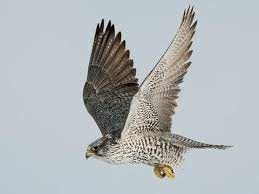
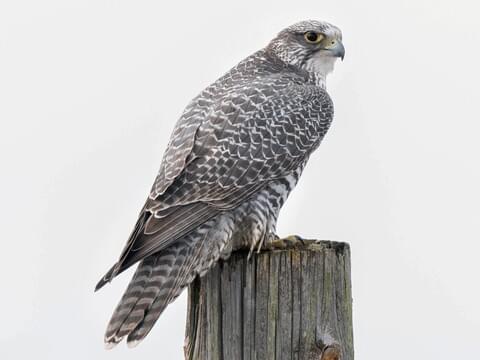
- Let’s start with the pronunciation of this falcon – it’s “jur – fal – kn” or ‘jerfalcon.’ Sometimes, it is
simply referred to as the ‘gyr.’ It is the world’s largest falcon. - Found throughout the northern tundra, folks in the Northwest Territories adopted this bird in 1990.
- Gyrfalcons nest on cliffs or somewhere very sheltered which helps protect the nest from the weather.
- Interestingly, they do not build their own nests. Instead, they will take over other nests and use those sites year after year.
- The gyrfalcon is sleek and fast, and in-flight can reach 300 km/ hr. No wonder it is the official mascot of the U.S. Air Force.
- It is similar to the peregrine falcon, and during the Middle Ages, the gyrfalcon was a favourite
of kings, largely because it was not an easy bird to procure. - The gyrfalcon eats mostly the rock ptarmigan – up to 3 of them a day on average.
- Climate change is considered the most significant threat since it’s transforming many landscapes
within the gyrfalcon range
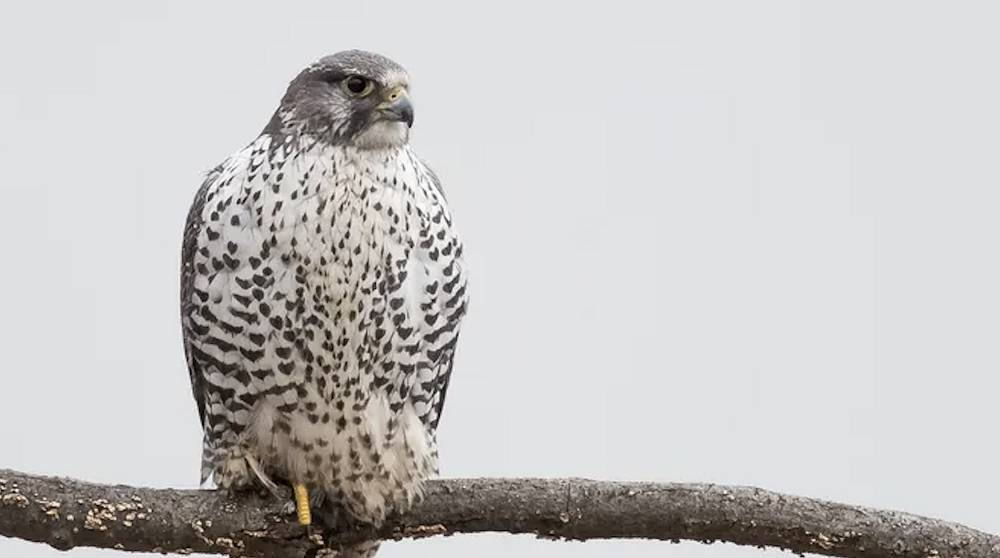
Nunavut – Rock Ptarmigan
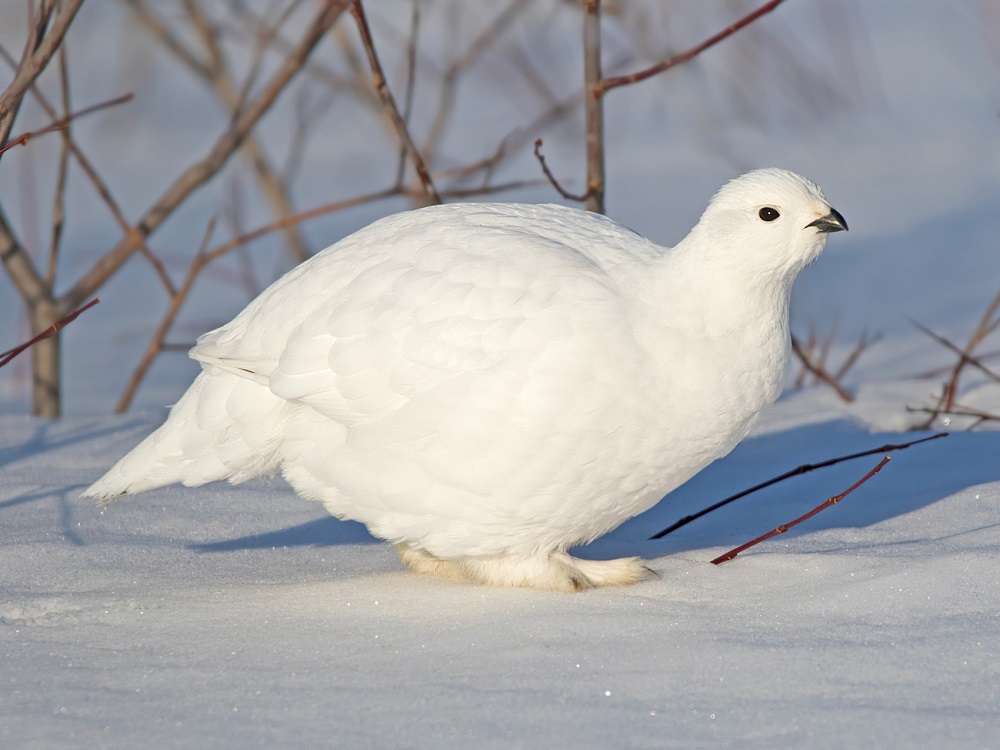
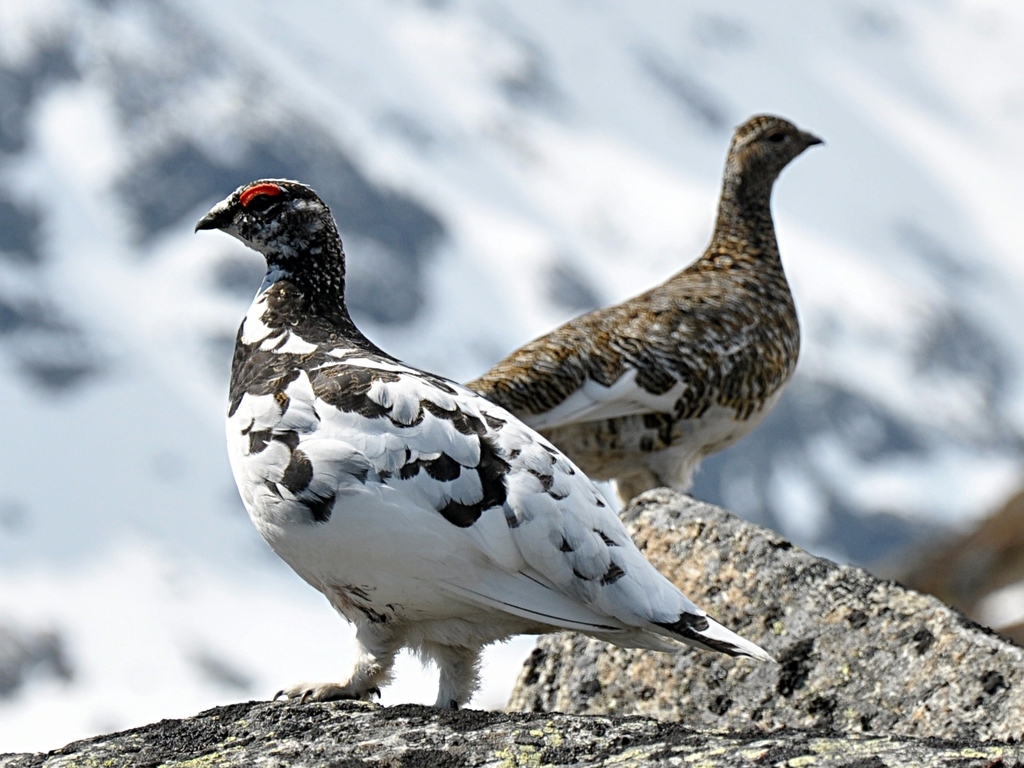
- The rock ptarmigan (don’t pronounce the “p”) is truly an Arctic bird, living year round in the far north.
- It plays an important role in the art, folklore, and diet of Nunavut’s indigenous people and is sometimes referred to as the ‘snow chicken’ or ‘partridge.’
- The rock ptarmigan likes to burrow into the snow for shelter and to escape predators like the gyrfalcon, fox and marten.
- A black stripe on its face acts like snow goggles to prevent snow blindness.
- White winter plumage helps with camouflage, and their feathered feet (like the snowy owl) provide warmth.
- Nunavut became Canada’s newest territory in 1999 and brought in a whole new list of symbols to celebrate, including the rock ptarmigan.













